Edoardo Dusi
WebAssembly: The Next Frontier of Cloud Computing
#1about 6 minutes
The historical evolution of abstraction in computing
A review of virtualization from mainframes and VMware to Docker and serverless sets the stage for WebAssembly as the next logical step.
#2about 4 minutes
Understanding the core components of WebAssembly
WebAssembly consists of a compiler that translates source languages, a compact binary format, and a runtime for execution.
#3about 2 minutes
Compiling Rust to Wasm for browser execution
A practical demonstration shows how to compile a Rust function into a Wasm module and call it from JavaScript within a web browser.
#4about 6 minutes
Accessing system resources with WASI and sandboxing
The WebAssembly System Interface (WASI) provides controlled access to host capabilities like the file system through a capability-based security model.
#5about 2 minutes
The Wasm component model for language interoperability
The component model provides a standardized interface that allows Wasm modules written in different languages to communicate seamlessly.
#6about 2 minutes
Why WebAssembly is a good fit for cloud workloads
Wasm offers efficiency, flexibility, scalability, and security, making it an ideal runtime for distributed cloud-native applications.
#7about 3 minutes
Running serverless Wasm with Cloudflare Workers
A demonstration shows how to deploy a Rust-based WebAssembly function as a serverless application on the Cloudflare Workers platform.
#8about 5 minutes
Integrating WebAssembly with Docker and Kubernetes
By using a containerd shim for Wasm runtimes like WasmEdge, you can manage and run Wasm modules alongside traditional containers.
#9about 2 minutes
Extending applications with polyglot WebAssembly plugins
Tools like Traefik use WebAssembly to allow developers to write plugins in various languages, enabling more flexible application extensions.
#10about 6 minutes
Navigating the WebAssembly ecosystem and foundations
An overview of the key organizations driving Wasm's growth, including the W3C, the Bytecode Alliance, and the CNCF.
#11about 2 minutes
Q&A: How to integrate WebAssembly with Docker
Using Wasm with Docker is a seamless experimental feature that requires enabling the containerd image store and Wasm support in Docker Desktop.
#12about 2 minutes
Q&A: Scaling cloud applications with WebAssembly
Wasm's extremely fast cold start times make it ideal for on-demand scaling, with current limitations being the scope of supported system APIs.
#13about 3 minutes
Q&A: Will Wasm replace or complement containers?
WebAssembly is currently best used alongside containers for specific high-performance or secure functions, rather than as a full replacement.
#14about 2 minutes
Q&A: Cost savings and resource utilization with Wasm
Wasm can lead to significant cost savings due to faster startup times, while overall resource utilization still depends heavily on application design.
#15about 2 minutes
Q&A: Future trends for Wasm in cloud computing
Future developments for Wasm include expanded system capabilities via WASI, improved performance, and support for garbage-collected languages.
#16about 5 minutes
Q&A: Advantages of WebAssembly for edge computing
Wasm is ideal for edge computing because it provides a single, secure, and lightweight runtime architecture that simplifies deployment across diverse devices.
Related jobs
Jobs that call for the skills explored in this talk.
Matching moments
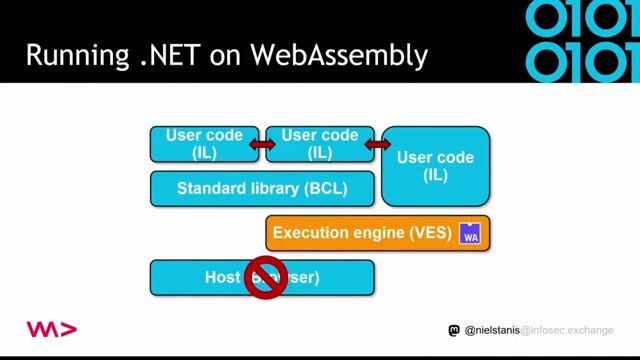
08:32 MIN
Taking WebAssembly beyond the browser with WASI
Using WebAssembly to run, extend, and secure your application
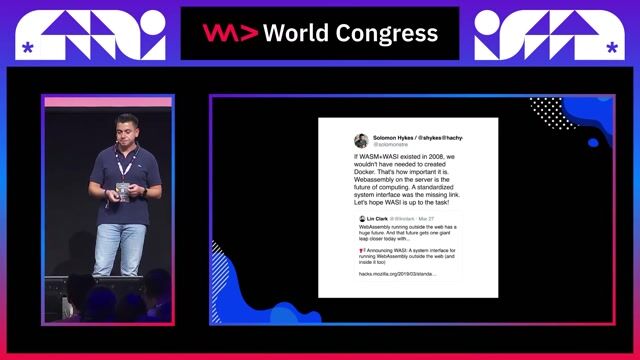
25:15 MIN
WebAssembly as the next evolution of cloud computing
WebAssembly Revolution: Elevating JavaScript's Reach and Performance

20:01 MIN
Applying WebAssembly to solve serverless performance issues
The Future of Cloud is WebAssembly

20:02 MIN
Applying WebAssembly to solve serverless performance issues
Fun with PaaS – How to use Cloud Foundry and its uniqueness in creative ways
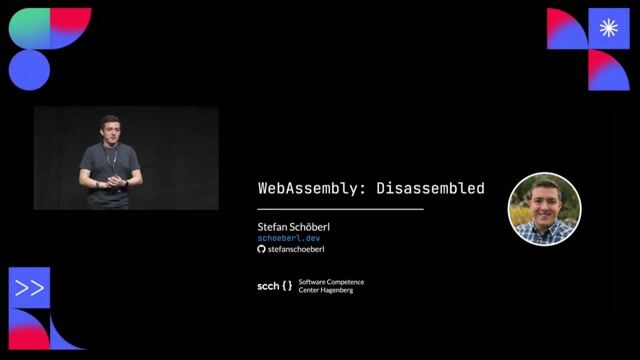
00:57 MIN
What WebAssembly is and its role on the web
WebAssembly: Disassembled

11:54 MIN
Defining WebAssembly and its original design goals
Fun with PaaS – How to use Cloud Foundry and its uniqueness in creative ways
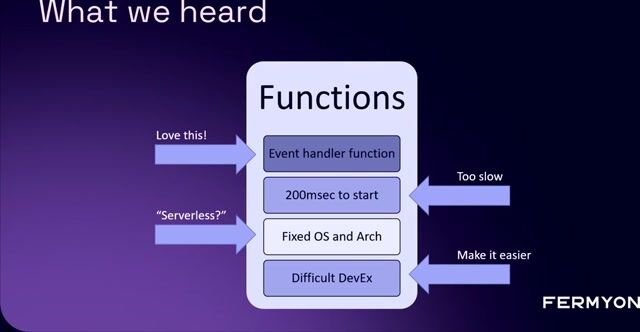
12:45 MIN
Understanding the original design goals of WebAssembly
The Future of Cloud is WebAssembly

00:44 MIN
Understanding WebAssembly and its initial industry adoption
Using WebAssembly to run, extend, and secure your application
Featured Partners
Related Videos
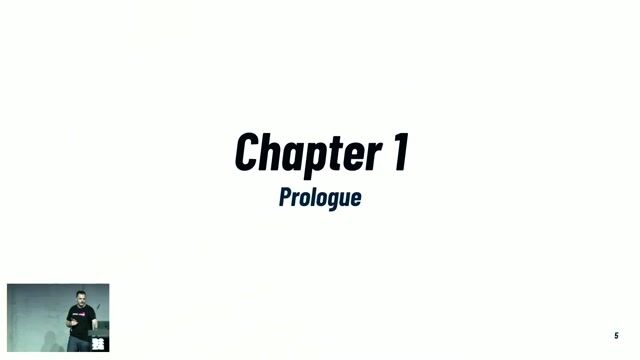 30:58
30:58WebAssembly: The Next Frontier of Cloud Computing
Edoardo Dusi
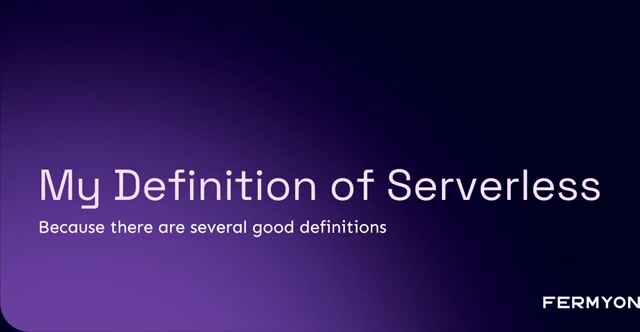 29:49
29:49The Future of Cloud is WebAssembly
Matt Butcher
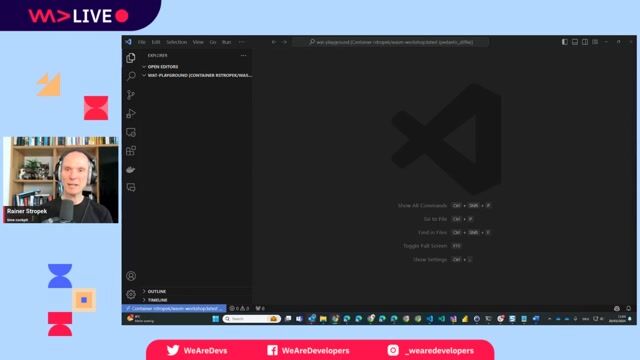 57:45
57:45Wasm Deep Dive - A Glance Behind the Scenes
Rainer Stropek
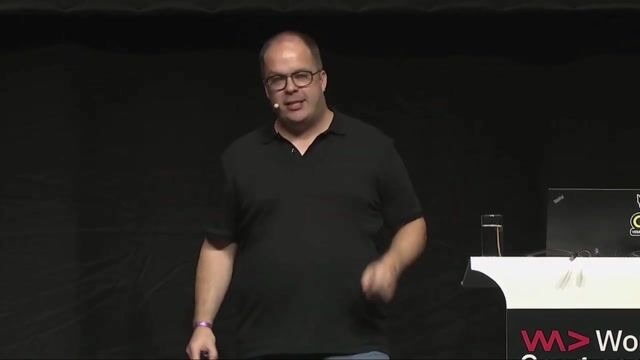 25:08
25:08Using WebAssembly to run, extend, and secure your application
Niels Tanis
 30:57
30:57WebAssembly Revolution: Elevating JavaScript's Reach and Performance
Önder Ceylan
 27:27
27:27WebAssembly: Disassembled
Stefan Schöberl
 58:53
58:53Using WebAssembly for in-database Machine Learning
Akmal Chaudhri
 29:49
29:49Fun with PaaS – How to use Cloud Foundry and its uniqueness in creative ways
Maurice Brinkmann
From learning to earning
Jobs that call for the skills explored in this talk.

DevOps Engineer – Kubernetes & Cloud (m/w/d)
epostbox epb GmbH
Berlin, Germany
Intermediate
Senior
DevOps
Kubernetes
Cloud (AWS/Google/Azure)


Backend Engineer (m/w/d)
fulfillmenttools
Köln, Germany
€35-65K
Intermediate
TypeScript
Agile Methodologies
Google Cloud Platform






Fullstack Developers (Headless CMS) - 100% remote, ASAP, 12+ months
wynwood tech LLC
Remote
React
Node.js
Next.js
JavaScript
+2